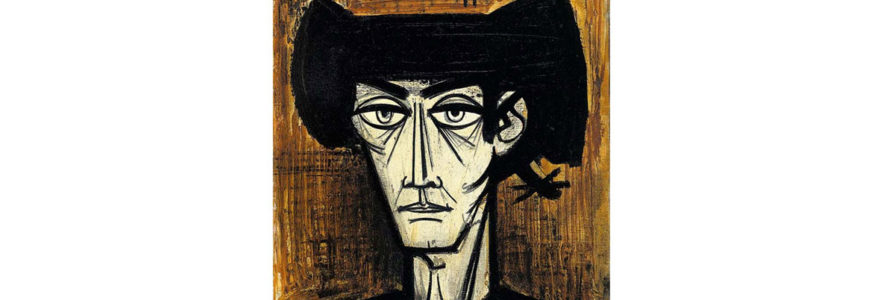The artistic landscape of the post-war era witnessed the emergence of maestro Bernard Buffet, a visionary painter whose distinctive style continues to captivate art enthusiasts to this day. With a career spanning over several decades, Buffet's unique interpretation of art captured the essence of his tumultuous time, leaving an indelible mark on the art world.
Bernard Buffet, a prominent figure who made significant contributions to the art scene during the post-war period. With a career that spanned several decades, Buffet captivated audiences with his bold and evocative works, leaving an indelible mark on the art world. Join me as we embark on a journey to unravel the essence of Bernard Buffet's artistic genius and understand the profound impact he had on the art landscape. This article aims to delve into the life and artistic journey of Bernard Buffet, exploring the elements that define his unparalleled style and the profound impact he made as a post-war master. More on estades.com.
Early life and introduction to art
Family background and childhood
Bernard Buffet, a renowned post-war French artist, was born on July 10, 1928, in Paris. He came from a modest background, as he grew up in the suburbs of Paris. His father was a postal worker, and his mother worked in a small shop. Despite his humble beginnings, Buffet showed an early affinity for art. His family recognized his talent and encouraged him to pursue his passion.
Formative years in art school
Buffet's artistic journey started when he enrolled at the École des Beaux-Arts in Paris. During his time there, he honed his skills and developed his distinctive style. He was heavily influenced by the works of the old masters, such as Rembrandt and Francisco Goya. Buffet's dedication to his craft was evident, as he immersed himself in the study of art history and techniques.
Early inspirations and artistic influences
Buffet drew inspiration from various sources, including literature and music. He found inspiration in the works of Fyodor Dostoevsky and Charles Baudelaire, which influenced his artistic themes and subject matter. Additionally, Buffet was captivated by the haunting melodies of composer Gustav Mahler, which he believed resonated with the melancholic tone of his art.
Rise to fame and unique style
As Buffet continued to refine his artistic skills, he began to attract attention and gain recognition for his unique style. His early works often depicted somber and introspective subjects, characterized by dark, bold lines and a somber color palette. Buffet's use of sharp angles and exaggerated forms created a sense of tension and unease in his paintings, making them instantly recognizable. Buffet's paintings stood out in the post-war art scene, where many artists were exploring abstract and non-representational styles. While his contemporaries were embracing avant-garde movements, Buffet remained committed to figurative art. His distinctive style became his trademark, setting him apart from other artists of his time.
Critique and reception in the art world
Buffet's artwork received mixed reviews from art critics. Some praised his technical skill and his ability to convey emotion through his brushstrokes. They appreciated his commitment to figurative art and his unique interpretation of the human form. However, others criticized Buffet for his perceived lack of innovation and his refusal to embrace the contemporary trends of abstract expressionism. Despite the differing opinions, Buffet's popularity soared. His works began to sell at high prices, attracting collectors from around the world. His paintings were exhibited in prestigious galleries and museums, solidifying his position as a leading figure in post-war art.
Buffet’s influence on post-war artistic trends
Characteristics of post-war art
Post-war art was characterized by a period of reconstruction and reflection. Artists sought to express the trauma and upheaval that had occurred during the war, often using abstract forms and expressive techniques. This period marked a departure from the traditional art styles that had dominated before the war.
Buffet's break from traditional styles
Buffet's decision to stick to figurative art during this period was a notable departure from the prevailing trends. While many artists were embracing abstraction, Buffet remained committed to representing the human form. His paintings showcased the human condition in a raw and honest way, often conveying a sense of isolation and despair.
His impact and influence on vontemporary artists
Buffet's unique style and unwavering commitment to figurative art had a lasting impact on subsequent generations of artists. Despite his critics, he inspired many contemporary artists who shared his passion for the human form. His influence can be seen in the works of artists like Lucian Freud and Jenny Saville, who continue to explore the complexities of the human condition through their art.
Reflection and evaluation of Buffet's legacy
Bernard Buffet's legacy as a post-war master continues to be evaluated and appreciated. His contributions to the art world, particularly his unique style and commitment to figurative art, have left an indelible mark. Buffet's ability to evoke emotions through his somber and introspective paintings resonates with audiences to this day. His works serve as a testament to the enduring power of art to convey the human experience.
